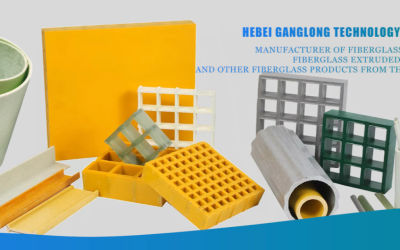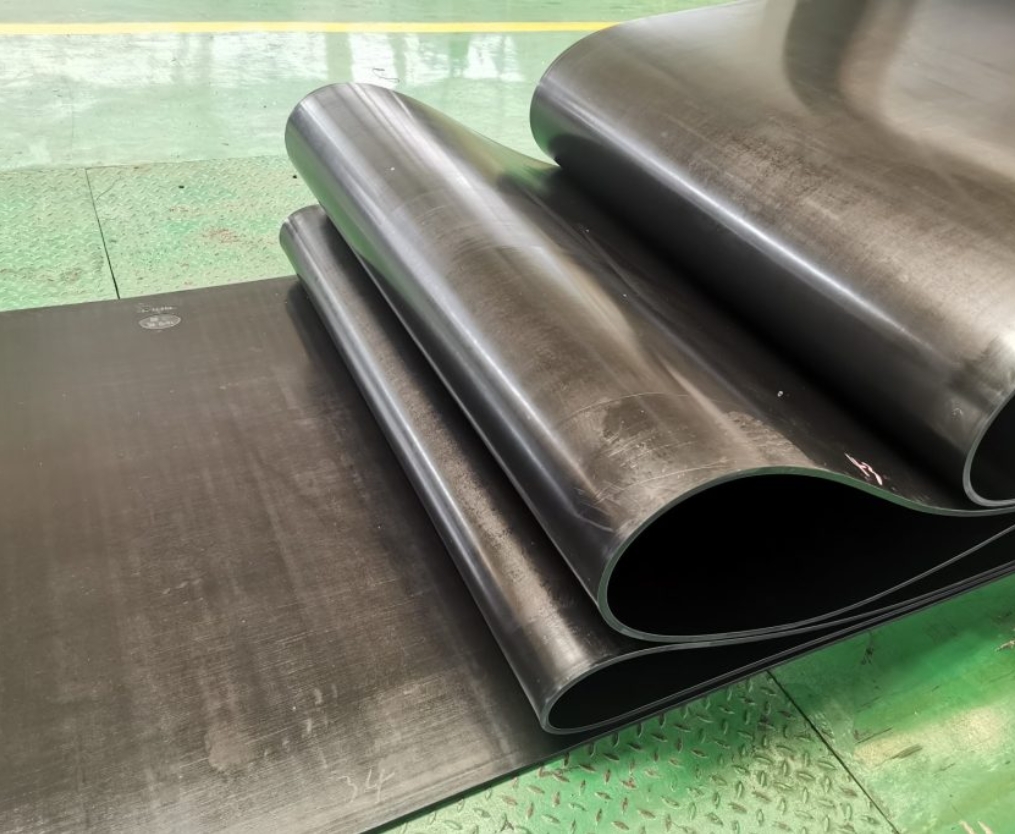Conveyor belts designed for long distances and harsh conditions are essential in various industries for their strength, durability, and reliability. Among these, the mining conveyor belt stands out for its critical role in transporting heavy loads in the most demanding environments. These belts, available in steel cord and nylon varieties, maintain structural integrity and provide enhanced traction, ensuring smooth and efficient material transport even over extensive distances.
Product Highlights
Suitability for Long Distances and High Abuse Conditions
1. Design for Long-Distance Transport:
- Structural Integrity: steel cord conveyor belts and nylon conveyor belts are designed to maintain structural integrity over long distances. The incorporation of steel cords or nylon fibers within the belt provides the necessary strength to support heavy loads without sagging or stretching.
- Low Elongation: The low elongation property of these belts ensures minimal stretch, which is crucial for maintaining consistent belt length and performance over extensive distances. This characteristic is particularly important in applications where precise material handling is required over long conveyor routes.
- Enhanced Belt Traction: The surface of these belts is engineered to enhance traction, reducing the risk of slippage during long-distance transport. This feature ensures that materials are conveyed smoothly and efficiently, even over extended runs.
2. High Abuse Conditions:
- Impact Resistance: Both steel cold conveyor belts and nylon conveyor belts are designed to withstand high-impact conditions. The robust construction of these belts allows them to absorb and dissipate the energy from heavy impacts, such as falling rocks or heavy loads, without sustaining damage.
- Abrasion Resistance: The outer layer of these belts is made from high-quality rubber compounds that provide excellent resistance to abrasion. This ensures that the belts can handle the wear and tear associated with rough and abrasive materials, prolonging their lifespan even in the most demanding environments.
- Heat and Chemical Resistance: For applications involving high temperatures or exposure to chemicals, specialized versions of these belts are available. These belts are treated with heat-resistant or chemically-resistant compounds, allowing them to operate effectively in harsh conditions without degrading.
High Durability Due to Superior Splice Efficiency and Strong Bonding
1. Superior Splice Efficiency:
- Advanced Splicing Techniques: The durability of steel cord and nylon conveyor belts is significantly enhanced by advanced splicing techniques. These techniques ensure a seamless and strong connection between belt segments, maintaining the integrity and strength of the belt throughout its length.
- Long Splice Life: Superior splicing methods, such as vulcanization, create a splice that is as strong as the original belt material. This results in a longer splice life, reducing the frequency of splice-related maintenance and downtime.
- Consistent Performance: Efficient splicing ensures that the belt performs consistently across its entire length, with no weak points that could lead to failure. This consistency is critical for maintaining high productivity and minimizing operational interruptions.
2. Strong Bonding:
- Bonding Between Layers: The bonding between the various layers of the conveyor belt is crucial for its overall durability. In steel cord conveyor belts, the steel cords are firmly bonded to the surrounding rubber, creating a unified structure that resists delamination and maintains strength under high tension.
- Enhanced Adhesion: The use of advanced adhesives and bonding techniques ensures that the layers of the belt adhere strongly to one another. This enhanced adhesion prevents the layers from separating under stress, which is particularly important in high-tension applications.
- Durability Under Stress: The strong bonding within the belt structure allows it to withstand the stresses of continuous operation, heavy loads, and high speeds. This durability translates to longer belt life and reduced maintenance costs, making these belts a cost-effective solution for demanding industrial applications.
3. Field-Proven Performance:
- Case Studies and Testimonials: Numerous case studies and testimonials from various industries highlight the reliability and durability of steel cord and nylon conveyor belts. These real-world applications demonstrate the belts’ ability to perform under challenging conditions, providing evidence of their superior quality and performance.
- Industry Standards and Certifications: These conveyor belts often meet or exceed industry standards and certifications, further validating their suitability for long-distance transport and high abuse conditions. Compliance with standards such as ISO and DIN ensures that the belts are manufactured to the highest quality specifications.
Conveyor Belt Details
Specific Model Details
1. Width:
- Standard Widths: Conveyor belts come in various standard widths, typically ranging from 18 inches (450 mm) to 72 inches (1800 mm). However, custom widths can be manufactured to meet specific requirements of different applications.
- Application-Based Width Selection: The width of the conveyor belt is chosen based on the type of material being transported and the volume of material. Wider belts are generally used for bulk materials like coal, ore, and aggregate, while narrower belts are suitable for smaller items or lighter loads.
2. Ply:
- Single-Ply Belts: These are typically used for light-duty applications where flexibility and reduced weight are critical.
- Multi-Ply Belts: Commonly used in heavy-duty applications, multi-ply belts consist of several layers of fabric or other reinforcement materials. Each ply provides additional strength and durability. Standard configurations include 2-ply, 3-ply, and 4-ply belts.
- Advantages of Multi-Ply Belts: They offer increased tensile strength, enhanced load-bearing capacity, and greater resistance to impacts and tears.
3. Top Surface:
- Smooth Top Surface: Ideal for conveying packaged goods, containers, and lightweight materials. Smooth surfaces reduce friction and are easy to clean.
- Textured or Rough Top Surface: Provides better grip and is suitable for transporting items that require more traction, such as sacks or boxes on inclined conveyors.
- Chevron Top Pattern: The chevron pattern offers enhanced traction and is particularly beneficial in applications involving steep inclines or declines.
4. Material:
- Rubber: The most common material used for conveyor belts, rubber is durable, flexible, and resistant to a wide range of environmental conditions. Different rubber compounds can provide resistance to abrasion, heat, and chemicals.
- PVC (Polyvinyl Chloride): PVC belts are lightweight and offer good resistance to chemicals and oils. They are commonly used in food processing and packaging industries.
- Polyurethane (PU): PU belts are known for their high flexibility and excellent resistance to abrasion, oils, and chemicals. They are ideal for applications requiring a clean, non-toxic belt.
- Fabric Reinforcement: Belts are often reinforced with fabrics like polyester, nylon, or cotton to provide additional strength and stability.
5. Gauge (Thickness):
- Varied Thickness: The gauge of a conveyor belt can range from as thin as 1/16 inch (1.6 mm) for lightweight applications to over 1 inch (25 mm) for heavy-duty mining applications.
- Application-Specific Gauges: Thicker belts are used for transporting heavy, abrasive materials, while thinner belts are suitable for lightweight, non-abrasive materials.
6. Length:
- Standard and Custom Lengths: Conveyor belts can be manufactured in standard lengths or customized to meet the specific needs of the installation. Lengths can vary from a few feet to several miles, depending on the application.
- Endless Belts: Some belts are designed to be endless, eliminating the need for splicing and providing a seamless, continuous loop for smoother operation.
7. PIW (Pounds per Inch of Width):
- Strength Measurement: PIW is a common measurement of the belt’s tensile strength, indicating how much weight the belt can handle per inch of its width. Higher PIW ratings indicate stronger belts capable of handling heavier loads.
- Common Ratings: Conveyor belts are available in a range of PIW ratings, such as 220 PIW, 330 PIW, 440 PIW, and higher. The appropriate PIW rating is selected based on the application’s load requirements.
8. Weight:
- Weight per Foot: The weight of a conveyor belt is typically measured in pounds per foot. This weight varies based on the belt’s width, thickness, and material composition.
- Impact on Installation: Heavier belts may require more robust support structures and drive systems, while lighter belts are easier to install and require less energy to operate.
Benefits of Chevron Top Pattern for Enhanced Traction
1. Improved Grip on Inclines:
- Steep Angles: Chevron-patterned belts are specifically designed to provide better grip on steep inclines and declines. The raised pattern creates additional friction, preventing slippage and ensuring that materials stay in place during transport.
- Consistent Movement: This enhanced traction is crucial for maintaining a consistent flow of materials, especially when dealing with loose or irregularly shaped items that might otherwise shift or roll back.
2. Enhanced Material Handling:
- Bulk Materials: The chevron pattern is ideal for transporting bulk materials such as sand, gravel, and grain. The raised sections of the belt help to contain these materials and prevent them from spilling over the sides.
- Loose and Slippery Items: Items that are prone to slipping, such as bags, sacks, and packages, benefit significantly from the increased grip provided by a chevron-patterned belt.
3. Versatility in Applications:
- Agricultural Use: In agriculture, chevron belts are used to move products like potatoes, beets, and other root vegetables, which can easily slide on smooth surfaces.
- Construction and Mining: Chevron belts are also used in construction and mining to transport materials such as crushed rock, sand, and ore. Their ability to handle heavy, abrasive materials while providing excellent grip makes them a valuable asset in these industries.
- Recycling and Waste Management: In recycling and waste management facilities, chevron belts help transport recyclable materials and waste efficiently, even on inclined conveyors.
4. Durability and Longevity:
- Wear Resistance: The raised pattern of chevron belts not only provides traction but also helps to distribute wear more evenly across the belt surface. This can lead to a longer lifespan for the belt.
- Maintenance Benefits: With less slippage and material spillage, chevron belts often require less maintenance than smooth belts. The reduced need for cleanup and repairs can result in lower operational costs.
5. Increased Safety:
- Reduced Risk of Accidents: Enhanced traction reduces the risk of materials slipping or rolling back on inclined conveyors, which can lead to accidents. This makes chevron belts a safer option for transporting materials in various industrial settings.
- Stable Transport: The stability provided by chevron belts ensures that materials are transported smoothly and securely, reducing the likelihood of load shifts that could pose hazards to workers.
Flat Conveyor Belt Product Details
White PVC Top Side and Nylon Fabric Bottom
Material Composition:
- White PVC Top Side:
- Polyvinyl Chloride (PVC) Overview: PVC is a synthetic plastic polymer widely used for its durability, flexibility, and resistance to various environmental factors. In the context of conveyor belts, the white PVC top side is designed to offer specific advantages for certain applications.
- Benefits of White PVC: The white color of the PVC top side is not only aesthetically pleasing but also serves functional purposes. It helps in detecting contamination and ensures that any dirt or foreign particles are easily visible. PVC provides excellent resistance to oils, chemicals, and abrasion, making it suitable for environments where hygiene and cleanliness are paramount.
- Smooth and Non-Porous Surface: The smooth, non-porous surface of the white PVC top side prevents the absorption of liquids and the buildup of contaminants. This feature is crucial in industries such as food processing, pharmaceuticals, and electronics, where maintaining a clean and sanitary conveyor surface is essential.
- Nylon Fabric Bottom:
- Nylon Fabric Properties: Nylon is a strong, durable synthetic fiber known for its high tensile strength and resistance to wear and abrasion. The nylon fabric bottom provides a stable and robust foundation for the conveyor belt, enhancing its overall performance and longevity.
- Flexibility and Resilience: Nylon fabric adds flexibility to the conveyor belt, allowing it to bend and flex without cracking or breaking. This flexibility is essential for applications that require the belt to navigate around pulleys and other components in the conveyor system.
- Low Friction Coefficient: The nylon fabric bottom has a low friction coefficient, which reduces the amount of energy required to drive the belt. This property also minimizes wear on the conveyor components, such as rollers and pulleys, extending their service life.
Moderate Thickness and Applications for Cleanliness:
Moderate Thickness:
- Balanced Design: The moderate thickness of the flat conveyor belt strikes a balance between strength and flexibility. It provides sufficient durability to withstand daily operational demands while remaining thin enough to flex and bend as needed.
- Standard Thickness Range: Typically, the thickness of such conveyor belts ranges from 1/16 inch (1.6 mm) to 1/4 inch (6.35 mm). This range is ideal for a variety of applications, offering the right combination of support and adaptability.
- Impact on Performance: A moderately thick belt ensures that it can handle a reasonable load capacity without sagging or stretching. This is particularly important in applications where the belt needs to maintain consistent tension and alignment.
Applications for Cleanliness:
- Food Processing:
- Hygienic Standards: In the food processing industry, maintaining hygiene is critical. The white PVC top side of the conveyor belt ensures that any contaminants are easily visible, facilitating quick and effective cleaning. The smooth surface prevents the buildup of food particles, reducing the risk of bacterial growth.
- Compliance with Regulations: These conveyor belts are designed to meet stringent food safety regulations and standards, such as FDA and EU regulations, ensuring that they are safe for direct contact with food products.
- Applications: Common uses in food processing include transporting raw ingredients, packaged foods, and ready-to-eat products. The belt’s resistance to oils and fats makes it ideal for handling meat, dairy, and bakery items.
- Pharmaceutical Industry:
- Cleanroom Compatibility: The white PVC top side and nylon fabric bottom make these belts suitable for cleanroom environments, where the presence of contaminants must be minimized. The belt’s easy-to-clean surface helps maintain the sterile conditions required in pharmaceutical manufacturing.
- Chemical Resistance: The conveyor belt’s resistance to various chemicals ensures that it can withstand exposure to cleaning agents and disinfectants used in pharmaceutical facilities.
- Applications: These belts are used for transporting pharmaceutical products, including tablets, capsules, and packaged medications, ensuring that they remain uncontaminated throughout the manufacturing process.
- Electronics Manufacturing:
- Electrostatic Discharge (ESD) Control: The nylon fabric bottom can be treated to reduce electrostatic discharge, which is critical in electronics manufacturing where static electricity can damage sensitive components.
- Dust and Particle Control: The smooth PVC top side prevents dust and particles from adhering to the belt, maintaining a clean environment essential for electronics assembly.
- Applications: The belts are used to transport electronic components and assemblies, such as circuit boards and microchips, through various stages of production and testing.
- General Industrial Use:
- Easy Maintenance: The white PVC top side is easy to clean and maintain, making it suitable for industries where regular cleaning is necessary to ensure product quality and safety.
- Durability: The combination of PVC and nylon provides a durable solution that can withstand the rigors of industrial use, including exposure to oils, chemicals, and physical wear.
- Applications: These belts are employed in various industrial sectors, including packaging, material handling, and logistics, where cleanliness and durability are essential.
Additional Features and Benefits:
- Anti-Microbial Properties:
- Hygienic Surfaces: Some white PVC conveyor belts are treated with antimicrobial agents that inhibit the growth of bacteria and mold. This feature is especially beneficial in food processing and pharmaceutical industries, where hygiene is critical.
- Extended Belt Life: Antimicrobial treatments help maintain the belt’s integrity by preventing microbial degradation, thus extending its service life.
- Temperature Resistance:
- Operational Range: These belts can be designed to operate effectively within a wide temperature range, making them suitable for both refrigerated and heated environments.
- Applications: This temperature versatility allows their use in applications such as cold storage, baking, and sterilization processes.
- Chemical and Oil Resistance:
- Protection Against Contaminants: The chemical resistance of PVC ensures that the belts can handle exposure to various cleaning agents, oils, and other industrial chemicals without degrading.
- Applications: This resistance is crucial in industries where the belts are exposed to such substances, ensuring long-term durability and performance.
Application Suitability
Designed for Severe Operating Environments
1. Harsh Conditions:
- Temperature Extremes: Conveyor belts designed for severe operating environments must withstand significant temperature variations, from freezing conditions in cold storage facilities to extreme heat in foundries and steel mills. Materials like high-temperature-resistant rubber or specialized coatings are used to maintain performance in these conditions.
- Abrasive Materials: Industries such as mining, construction, and aggregate handling expose conveyor belts to highly abrasive materials like sharp rocks, sand, and gravel. Belts are reinforced with robust materials, such as steel cords or multi-ply fabrics, to resist wear and tear.
- Chemical Exposure: In environments where belts are exposed to aggressive chemicals, such as in chemical processing plants or fertilizer production, belts are made with chemically resistant compounds that prevent degradation and ensure longevity.
- Moisture and Humidity: Belts used in marine environments, wastewater treatment plants, or food processing facilities must resist moisture and humidity. These belts often feature waterproof coatings or materials that do not absorb water, preventing swelling, weakening, and microbial growth.
2. Heavy Loads and High Impact:
- High Load Capacity: Conveyor belts for severe environments are designed to carry heavy loads over long distances without stretching or breaking. This requires the use of high-tensile strength materials, such as steel cords or heavy-duty fabrics, which provide the necessary support.
- Impact Resistance: Belts must endure the impact from falling materials, especially in mining or quarrying operations where large rocks and debris can drop onto the belt. Impact-resistant belts are reinforced with layers of tough materials that absorb and dissipate the energy from impacts, reducing the risk of punctures and tears.
- Continuous Operation: In industries where conveyors run 24/7, such as in power plants or manufacturing lines, belts need to be highly durable to withstand continuous operation. These belts are built with materials that resist fatigue and wear over extended periods.
3. Harsh Environmental Factors:
- Dust and Debris: In environments like cement factories or grain processing plants, belts must cope with high levels of dust and debris. Dust-resistant belts prevent the accumulation of particles that can cause wear and mechanical issues.
- Corrosion: Environments with corrosive elements, such as salt in marine applications or certain chemicals in industrial settings, require belts that resist corrosion. Stainless steel components or special coatings protect the belt from corrosive damage.
- UV and Ozone Exposure: Outdoor applications expose belts to UV radiation and ozone, which can degrade materials over time. UV-resistant belts use materials and coatings that protect against these elements, extending the belt’s service life.
Importance of Durability, Efficiency, and High Performance
1. Durability:
- Long Service Life: Durable conveyor belts reduce the frequency of replacements and downtime, which is critical in maintaining continuous operation in severe environments. This longevity is achieved through the use of high-quality materials and robust construction techniques.
- Cost Savings: Investing in durable belts reduces long-term costs by minimizing maintenance, replacements, and downtime. This leads to significant savings in labor, materials, and lost productivity.
- Reliability: Durable belts ensure reliable operation, which is essential for industries where operational continuity is crucial, such as mining, power generation, and manufacturing. Reliable belts prevent unexpected shutdowns and disruptions.
2. Efficiency:
- Energy Efficiency: Efficient conveyor belts reduce the energy required to transport materials. This is achieved through low-friction materials, optimized design, and lightweight construction that minimizes the power needed to drive the belt.
- Operational Efficiency: Belts designed for severe environments are optimized for fast and efficient material transport. High-speed belts with smooth surfaces and precise tracking mechanisms enhance the overall efficiency of the conveyor system.
- Reduced Maintenance: Efficient belts require less frequent maintenance, freeing up resources and time for other critical tasks. This efficiency is achieved through materials and designs that resist wear, damage, and environmental factors.
3. High Performance:
- High Load Capacity: Performance-oriented belts handle high loads without compromising speed or efficiency. This capability is essential for industries such as mining and construction, where large quantities of materials must be moved quickly and efficiently.
- Precision and Control: High-performance belts offer precise control over material movement, essential for industries like food processing and pharmaceuticals, where accuracy is critical. These belts maintain consistent tension, alignment, and speed to ensure precise handling of materials.
- Enhanced Traction: Belts designed for high performance often feature specialized surface patterns, such as chevron or textured surfaces, which provide enhanced traction. This is crucial for transporting materials on inclines or in conditions where slippage can occur.
4. Specific Industry Applications:
- Mining:
- Heavy-Duty Operations: Mining conveyor belts are built to handle the toughest conditions, including transporting heavy ores, sharp rocks, and abrasive materials. They are designed to withstand high impact and continuous use.
- Longevity: Mining operations benefit from the extended service life of durable belts, reducing the frequency of costly downtime and replacements.
- Construction:
- Material Handling: Conveyor belts in construction transport large volumes of sand, gravel, and concrete efficiently. High durability and load capacity are critical in these applications.
- Robust Design: Belts used in construction must resist abrasion and impact, ensuring they can handle the harsh conditions of construction sites.
- Food Processing:
- Hygiene and Safety: Conveyor belts in food processing are designed to meet stringent hygiene standards. The materials used must resist bacteria, chemicals, and moisture.
- Efficiency: High-performance belts ensure efficient transport of food products, maintaining consistency and quality throughout the production process.
- Power Generation:
- Continuous Operation: Conveyor belts in power plants must handle continuous operation and heavy loads, transporting coal, ash, and other materials reliably.
- Durability: Belts designed for power generation are built to last, reducing the need for frequent maintenance and replacements.







